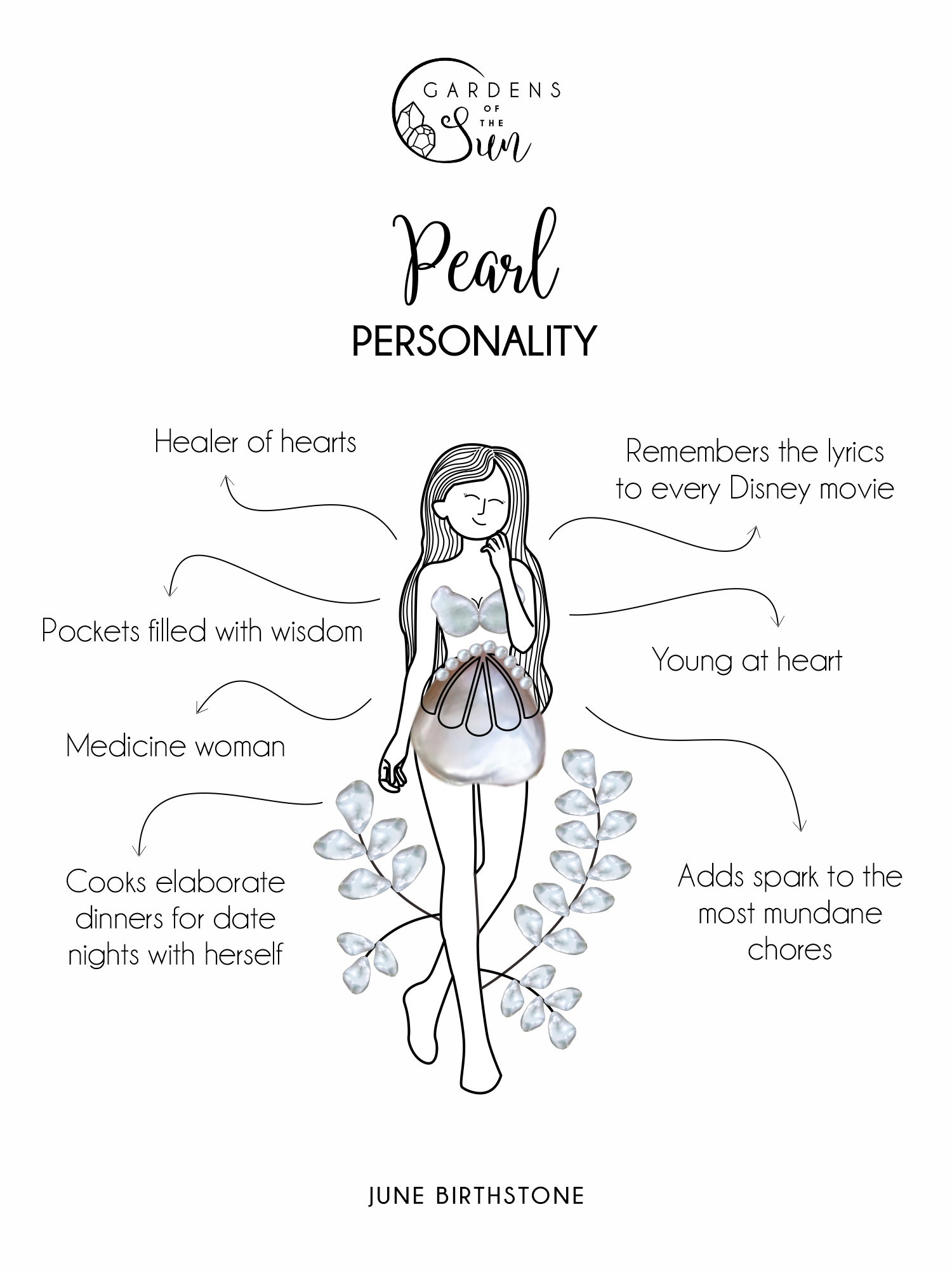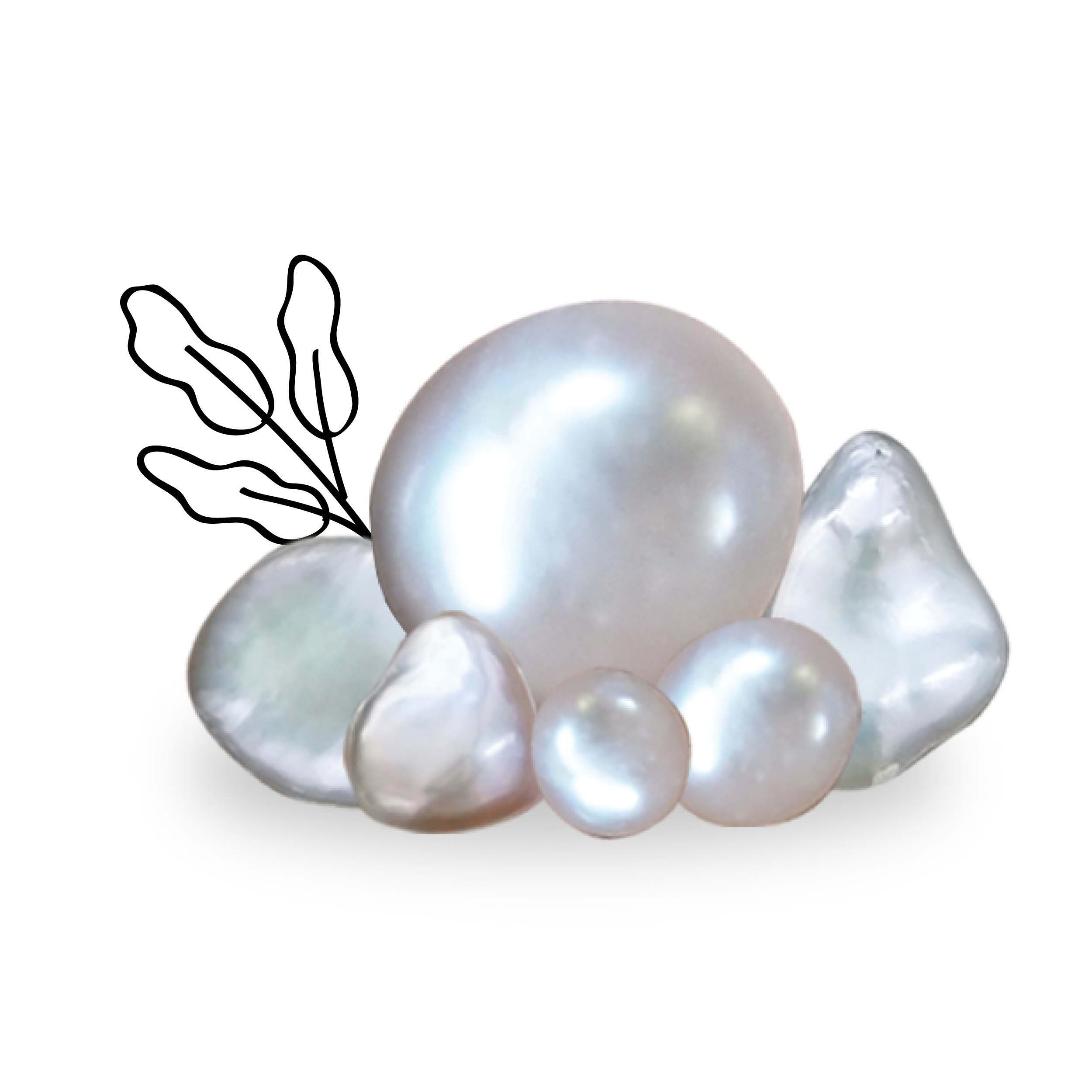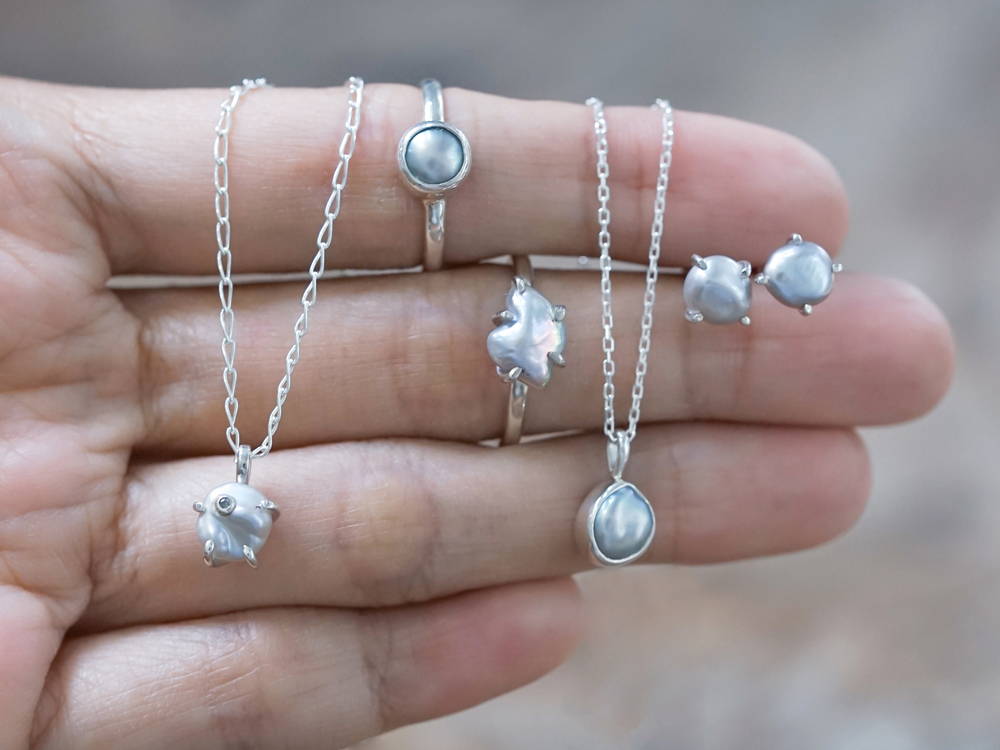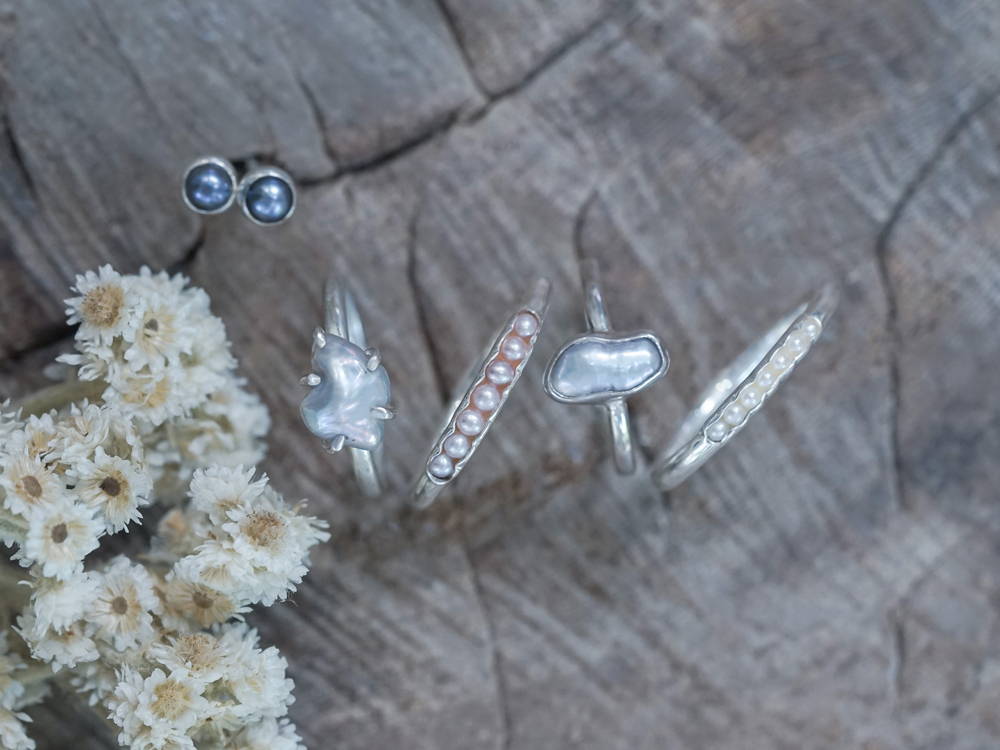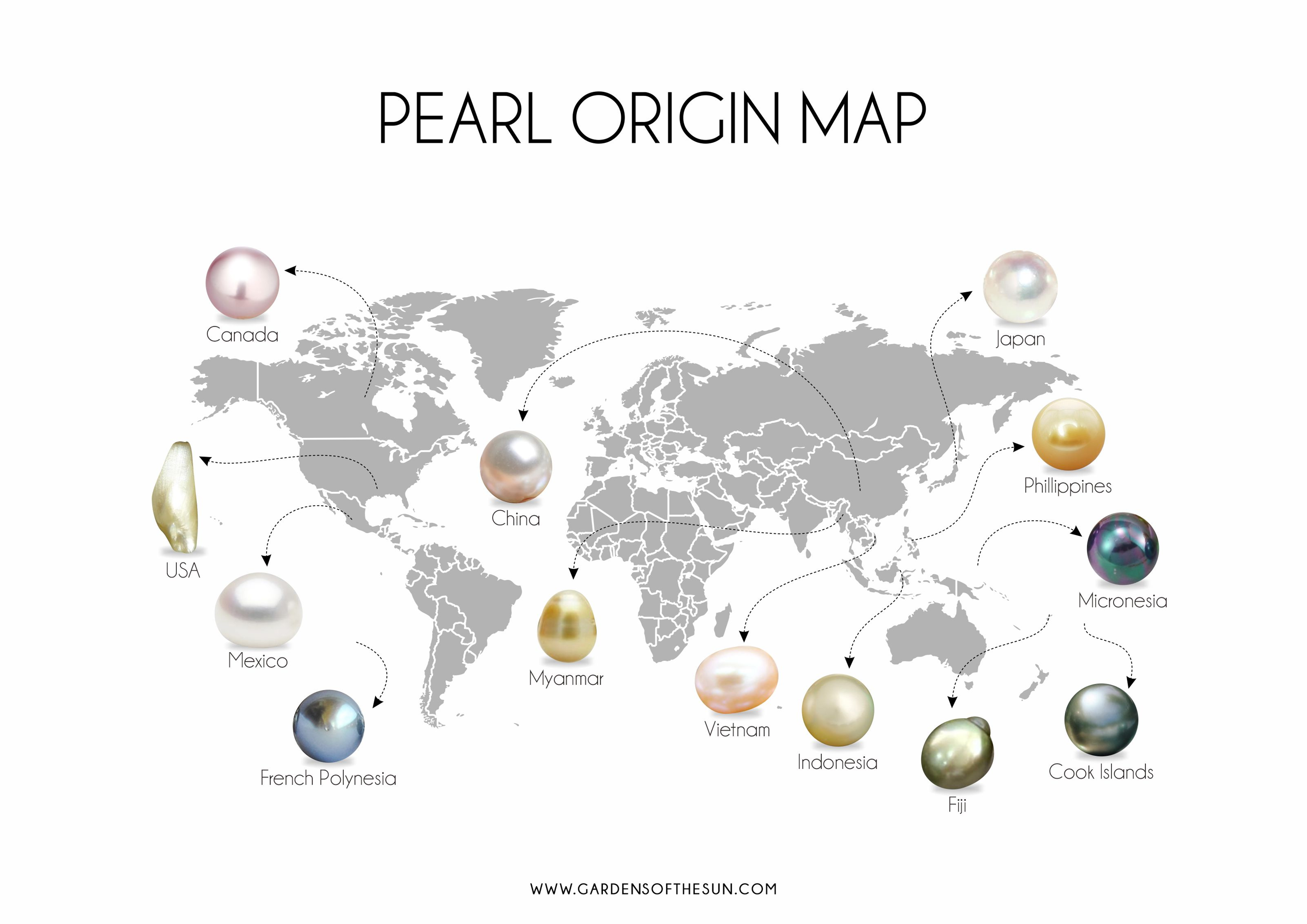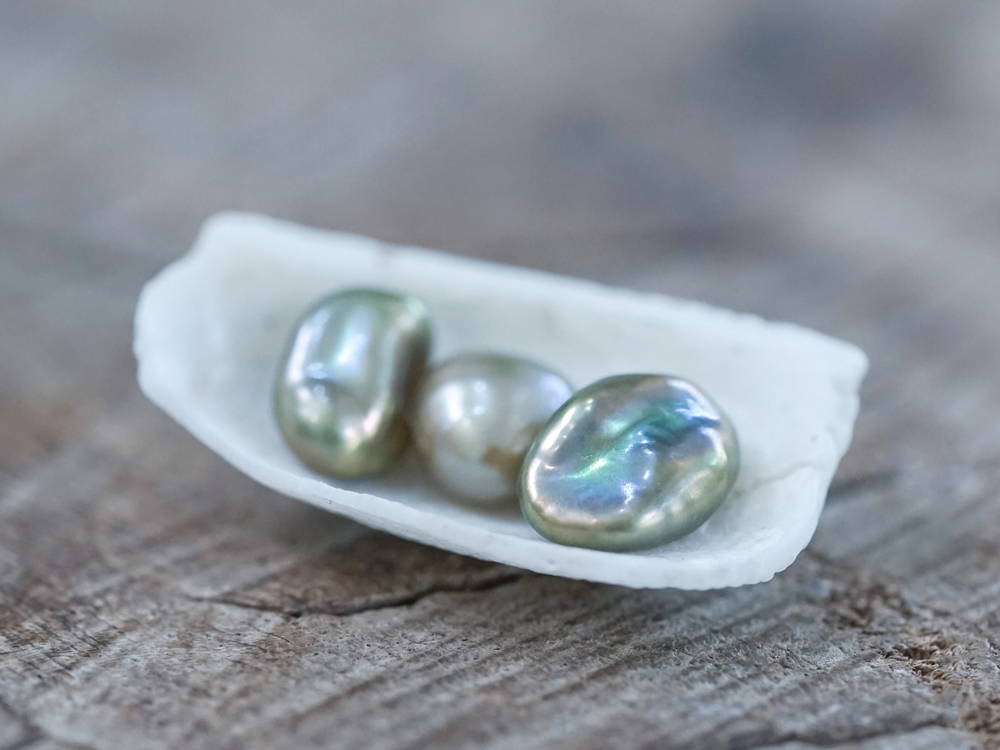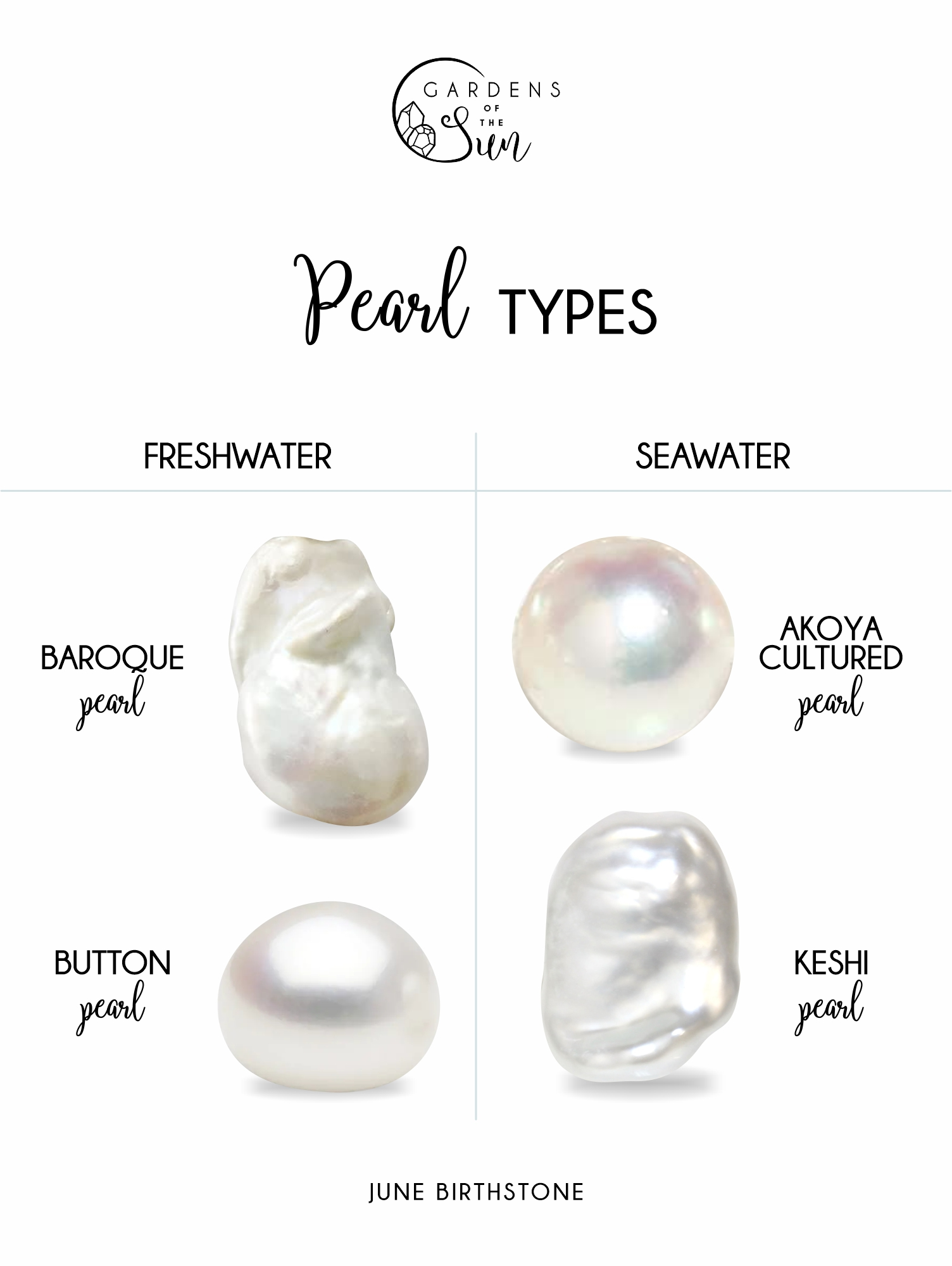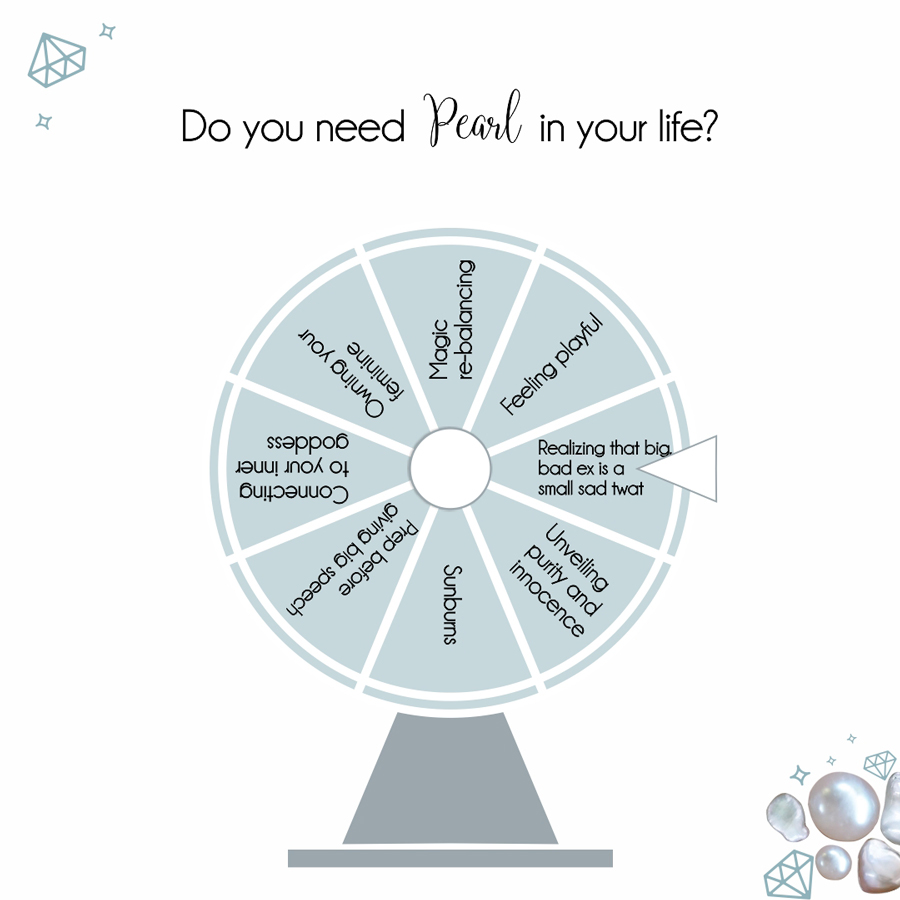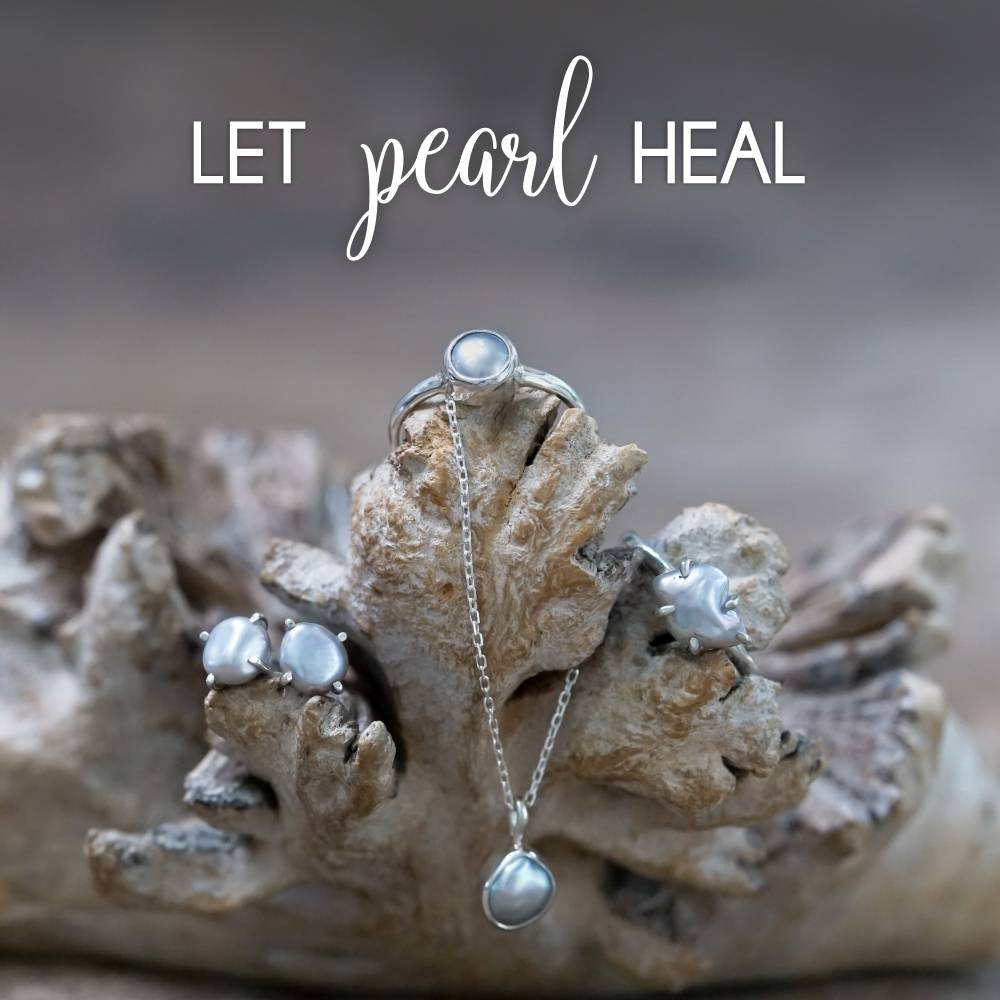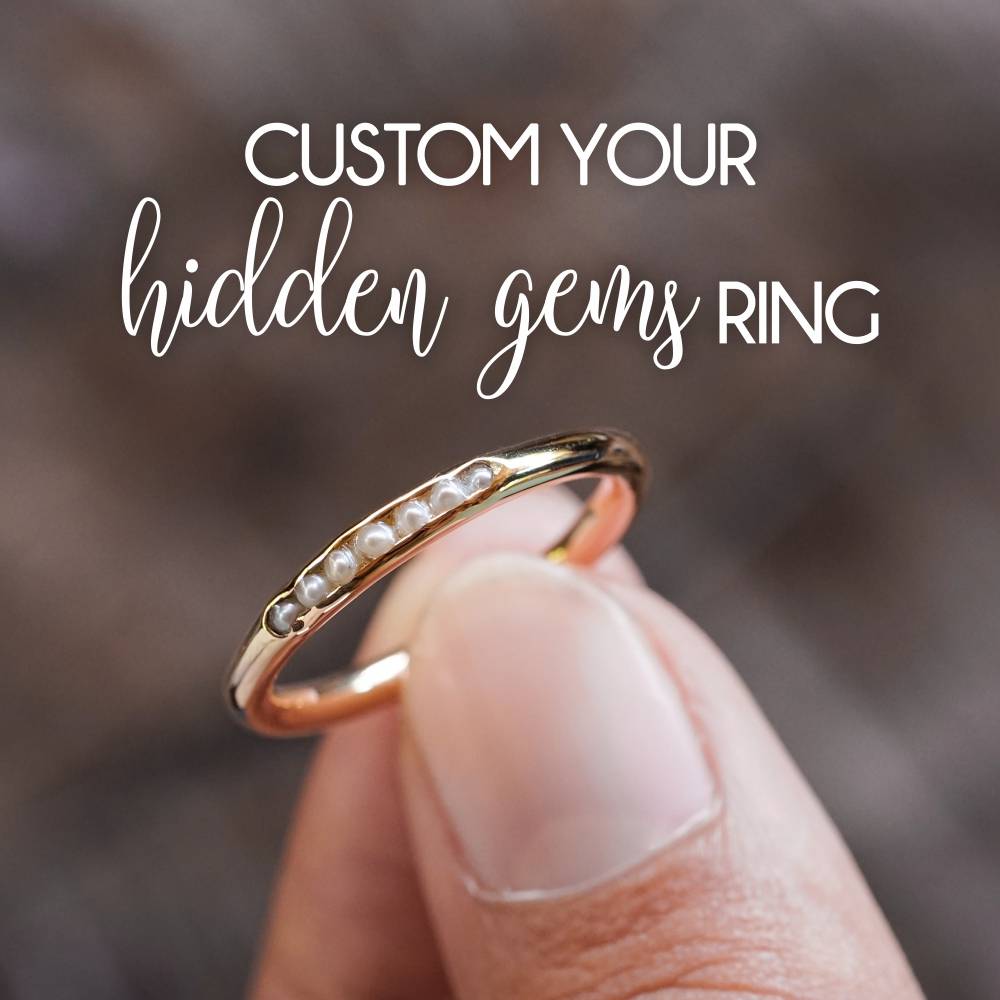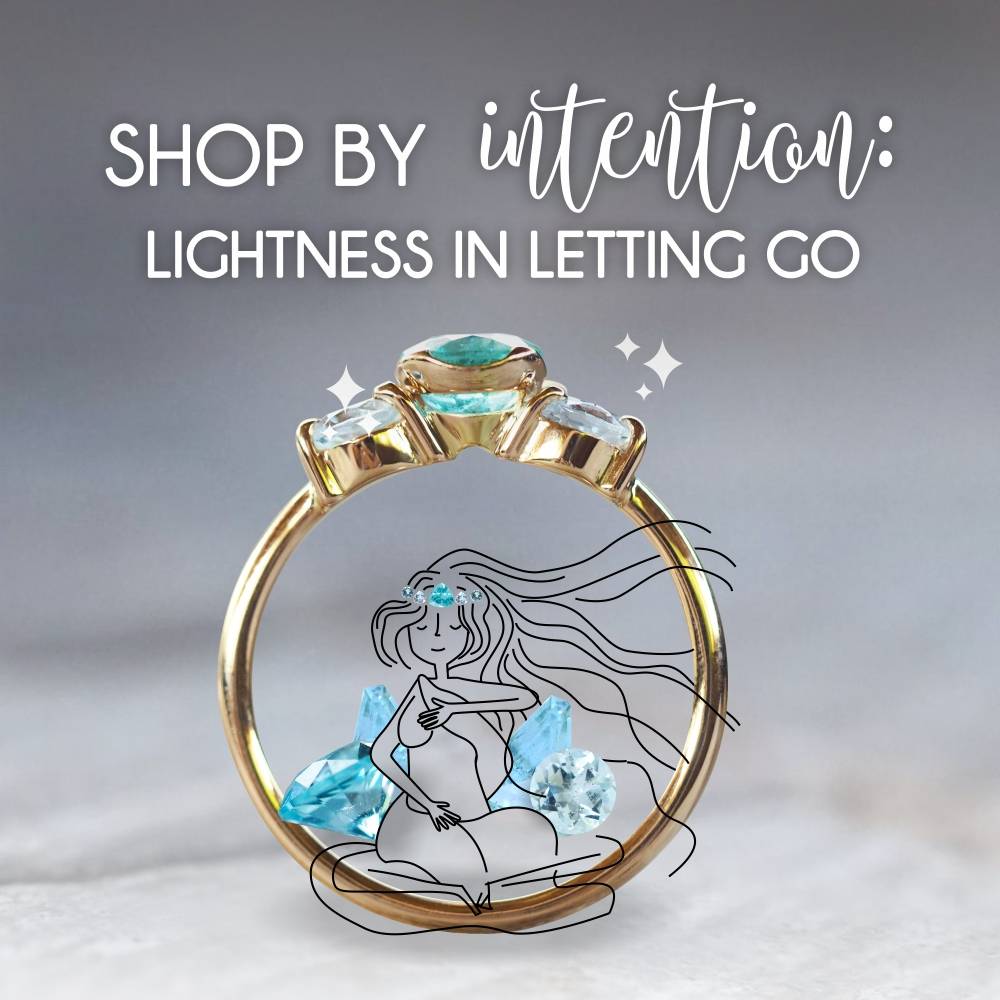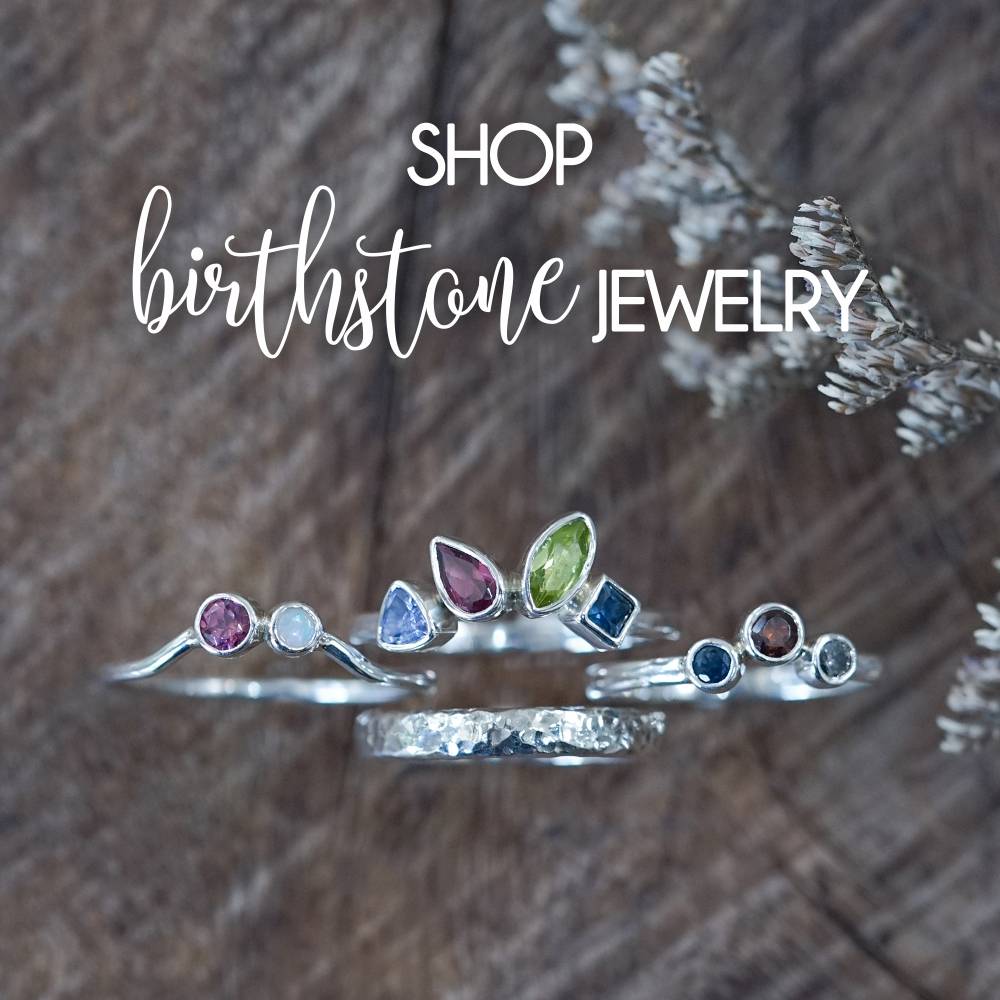Your Cart is Empty
June Birthstone: PEarl
Pearl is the June birthstone. She glows soft, luminous, and full of quiet power, the pearl June birthstone was born from grit. Literally. A tiny grain of sand, an uninvited guest, becomes layer after layer of healing.
A gem that’s not carved or cut, but grown from within. That’s what makes the June month birthstone jewelry so special. It’s a gem that forms through patience, transformation, and self-protection.
The pearl birthstone meaning? Purity, wisdom, and healing from the inside out. So if you’ve ever turned your pain into your power, you’ve already got pearl energy.
You heard them through the grapevine, the myths about her.
One said she was born from a raindrop, falling from the heavens on the moon’s rolling tears.
No one knows how she got here, but she’s been around – there’s an infinite wisdom about her, and an innocence.
She keeps you pure at heart.
Pearl heals from within. She’s the ocean’s magical built-in medicine woman, produced by organic matter, to heal itself back. Like an immune system, only she’s shiny and strong.
She’s the secret healer of the seas, and for a good reason.
Imagine a soft-bodied mollusk idling in the water. Lounging on the ocean floor, and purifying the water, because that’s what she does.
A speck of sand enters her sacred cavity and without fingers to scratch her itch, the ocean dust just stays… inside. Latched on to her wall, the mollusk secretes layers upon layers of protection, a thin veil to nourish and protect her soft meat.
Over time, concentric layers build up and a glistening, lustrous shiny pearl is born. So if you think about it: a pearl is a soft mollusk’s band aid.
Pearls of wisdom belong to those born in June. It’s a healing gem, a spiritual token for the feminine.
Pearls are totems of wisdom and purity. It’s shrouded in ancient folklore, and made its way around the world. The pearl birthstone history goes way back. We’re talking Cleopatra-dissolving-pearls-in-wine level iconic.
In ancient China, dragons were said to carry pearls in their mouths. In Hindu mythology, pearls were gifts from the gods. Pearls were traded, treasured, and tied to status and power long before diamonds entered the chat.
Pearls help women connect with their inner goddess. It nurtures new beginnings, and protects the wearer with fierce, motherly grit. The pearl is sometimes used as a magic re-balancing stone that irons out the kinks.
Pearl powder is used, to this day, in elixirs and beauty products. So you know its power goes beyond skin-deep.
PEARL NAMESAKE
the Latin perna, meaning leg, after the lamb leg-shaped mollusk
Pearl is strong, resilient, and shines with positivity. She’s a healer of hearts. She’s your diary, transporting you back to your happy self when you’re feeling sorry.
She sustains you with tender care when you’re up at night shedding tears. She knows time is the ultimate healer of all, but she’ll ride the tough rides with you - no questions asked.
Holding a pearl in your hand is believed to open up your heart for acceptance and peace. It’s a charming piece for anyone living life to the fullest, until your heart bursts with joy or you’re worn out, but not with regret.
Give it to your momma as a token of new beginnings when you’re leaving her nest or as she’s navigating the cycles of womanhood and motherhood.
Have your own story of pain and healing? Pearls can be a chic testament to your journey. And you don’t need a string of pearls like your great auntie to conjure up drama. A single pearl can look just as strong and badass.
Wondering when pearl should be worn? Traditionally, pearls are worn during transitions: weddings, births, big life shifts. But we say, wear them when you need a little grounding. When you're stepping into something new. Or simply when you want to feel held.
Pearls make a wonderful and symbolic gift for anyone moving to the next chapter, after having made peace with themselves and wanting the dust of past life to settle.
1. Pearl meaning & Vibes
Pearl Birthstone
Pearl is the classic June birthstone. Those born in June can also choose moonstone or alexandrite as alternative birthstones.
Pearl Zodiac Sign
Cancer (22 June – 22 July) is the zodiac sign most closely associated with the pearl. This water sign's nurturing nature aligns with the pearl's healing energy, and it also resonates with Cancer gemstones that support emotional balance and intuition.
Pearl Chakra:
The seventh chakra - the Crown or Sahasrara chakra
The crown chakra radiates upwards and reconnects you to your highest self. It’s the wise Self who keeps you moving forward, knowing there’s more to you ready to manifest.
The third chakra - the Heart or the Anahata chakra
Pearl strengthens the heart for forgiveness. It gives you the courage to deal with your own wounds and prepares them for new beginnings.
How pearl fits into your life:
June lovers.
Mamas-to-be or longtime mamas.
Your spouse of 12 years.
Brides.
Pearl meaning and healing vibes
The pearl birthstone meaning is deeply rooted in emotional healing, feminine wisdom, and transformation. Worn for centuries as a symbol of purity, pearls teach us to embrace softness as strength.
Purity
Faith
Calm
Imagination
Honesty
Beauty
Balance
- Royalty
- Healing
- Nurture
Use pearls for:
A hangover cure
A new love, a new job, a new home, you get the idea
Realizing that the big, bad ex is actually a small, sad twit and feeling so grateful that you got rid of their sorry pathetic ass
Sunburns
Prep before giving that big speech or presentation

are pearls a stone?
Technically? No. Pearls aren’t a mineral like most gemstones. Pearls are organic gems, made inside living mollusks, formed layer by layer with nacre. Think of them as the ocean’s version of a healing balm.
2. pearl Origin
Our pearls are responsibly sourced from:
China, Indonesia, Tahiti, USA
Does where your pearl comes from matter?
Absolutely. The pearl June birthstone is the only one born from a living being, which means its surroundings, water quality, and care directly shape the gem it becomes. Unlike cut-and-polished stones, pearls grow layer by layer inside a mollusk, and their final form is deeply tied to place and process.
Different waters, different vibes:
- Indonesia gives us dreamy, irregular keshi pearls: funky shapes, rich texture, lots of personality
- Japan is known for Akoya pearls with a crisp, classic round shape and high luster
- China produces most of the world’s freshwater pearls: affordable, abundant, and full of variety
- French Polynesia is home to Tahitian pearls: naturally dark, often with silver, green, or peacock hues
A pearl’s color, shape, and glow depend on the mollusk species, thewater it lived in, and how much time it had to grow. Its energy isshaped by its origin, just like yours.
At Gardens ofthe Sun, we only use pearls of known origin, because it matters. To thewater, the farmers, the planet, and to you.
how does the pearl birthstone form?
A pearl forms inside a mollusk, like an oyster or mussel. When something small, like a grain of sand or parasite, gets inside its shell the mollusk covers the irritant with layers of a smooth substance called nacre. This is the same shiny material that lines the inside of the shell, also known as mother of pearl. Basically, the mother of pearl is a layer of protection. Over time, layer after layer of nacre builds up and hardens around the irritant, eventually forming a pearl.
3. pearl care & Durability
Tough love level:
2.5-4.5 Mohs scale of hardness with fair to good toughness. As the world’s lone organic gemstone, pearls are rather delicate. They’re soft and can easily be scratched. Wear with gentle, loving care.
Avoid chemicals when wearing it, including perfume and hairspray, because these can damage the luster of your pearls. Wipe your pearls with a soft and clean cloth after each wearing.
Learn more about the difference between hardness and toughness in gemstones.
Common pearl treatments:
Bleaching. Pearls are commonly bleached to make the colors moreuniform. This makes it easier to create even-colored strings of pearls.
Curious about how your gems are treated? Read our guide to the most common gemstone treatments.
Pearl cleaning, care, and caution:
Pearls easily scratch and lose their luster. However, it’s quite a tough stone in the sense that it won’t break or chip easily.
Thesafest way to keep its shine is by regular cleaning with warm, soapywater. Avoid ultrasonic or steam cleaners at all cost. For naturalcleaning, use our our soap nuts in a tin!
4. pearl Types
Pearls are made from nacre, also known as the mother of pearl, which is the inner iridescent layer inside the mollusk. Because pearls are made of both organic and inorganic matter, their shapes can vary.
Most pearls are cultivated in a controlled environment. Gentle hands pry open the mollusk after 6 months to a few years of nestling the pearl.
A mollusk can contain more than one pearl.
Natural pearls vS cultured pearls
Natural pearls
Natural pearls are created by, well, nature. The secretion of nacre is a defense system when irritants enter the soft cavity of a mollusk. Being on the seabed bustling with life, seawater sand or dust can enter anytime.
Even though it sounds like mollusks are bursting with pearls all the time, natural pearls are rare and expensive because diving and searching for these mollusks is a dangerous profession.
Cultured pearls
Cultured pearls aren’t synthetic pearls. They’re still created inside a living mollusk and produced by its nacre. The difference is the intentionality of the process.
Unlike wild mollusks, pearl farmers nourish and care for the mollusk to ensure a successful harvest. Think of it as the difference between wild forest bananas and bananas grown on a plantation.
Freshwater pearls vS seawater pearls
Freshwater pearls
Freshwater pearls grow inside mollusks in the river and lake. They come in a range of sizes, shapes, and colors. Mollusks are usually bigger than oysters (which produce saltwater pearls), so a mollusk can create multiple pearls at a time.
Freshwater pearls farmers also harvest it more often (once every two years) than seawater pearls farmers. In other words, freshwater pearls are abundant. Since they’re cultured, farmers can control the shape, so there are pearls shaped as crosses, moons and stars.
The downsides to freshwater pearls are their smaller size and less lustrous shine. Most freshwater pearls come from China.
Seawater pearls (or salt water pearls)
Seawater pearls (or salt water pearls) are grown inside oysters and usually originate from Japan, Thailand, Australia, China, French Polynesia and Vietnam. The famous akoya pearls from Japan are seawater pearls, prized for their superior luster and almost-perfect round shape.
Another popular seawater pearl is the keshi pearl. These are by-products of pearl cultivation or result of cultivation mishaps, hence their funky shapes (a happy accident, you might say!).
Seawater pearls tend to have thinner nacre, which takes longer to form than that of freshwater pearls. The longer time means better quality of nacre and more luster.
5. alternative june birthstones
Not feeling the mollusk magic? While the pearl is the most traditional June birthstone stone, it’s not the only one. What is the birthstone for June, you ask? Pearl, yes, but also moonstone and alexandrite.
If you’re looking for a vegan June birthstone alternative, moonstone is a dreamy, otherworldly option that comes without the shellfish.
Moonstone holds similar themes - feminine energy, new beginnings, and deep emotional wisdom - but without the organic origin.
That makes it perfect for anyone who loves the symbolism of the pearl birthstone month but wants a cruelty-free stone that doesn’t come from the sea.
6. pearl birthstone as your personal keepsake
If you’re born in June, pearl is your quiet strength. A reminder that healing doesn’t have to shout. That softness can be a shield. That you’re allowed to feel things deeply, and still come through shimmering.
Pearls aren’t mined. They’re grown in water, born from irritation and transformed into something whole. They take what hurts and turn it into beauty. That’s the real pearl birthstone meaning: resilience, tenderness, and the kind of wisdom that only comes from going through it.
You don’t need a full strand to feel the magic. One single pearl, imperfect and luminous, carries enough energy. Whether it’s your first pearl or a gift to mark a new chapter, wearing pearl birthstone jewelry is like holding your own evolution right up to the light.
So, why pearl jewelry? Because you’ve done the work. Because you’re still becoming.
Because what’s delicate can also be mighty, and you know that better than anyone.












